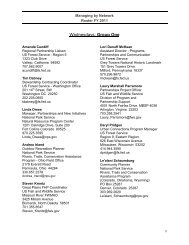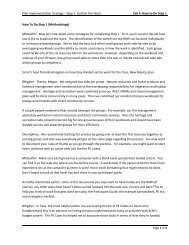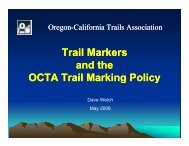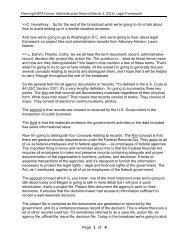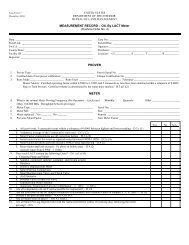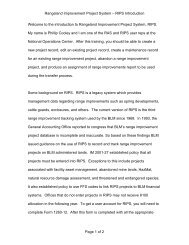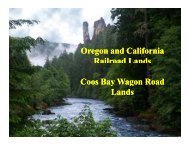BLM Desk Guide to Cooperating Agency Relationships - National ...
BLM Desk Guide to Cooperating Agency Relationships - National ...
BLM Desk Guide to Cooperating Agency Relationships - National ...
- No tags were found...
You also want an ePaper? Increase the reach of your titles
YUMPU automatically turns print PDFs into web optimized ePapers that Google loves.
Section 1IntroductionSection 1. IntroductionIn the American political system, differentspheres of government—Federal, State,local, and tribal—have their respective areasof responsibility, authority, and expertise.As a result, the need for cooperation in themanagement of public lands and resources isespecially critical. This <strong>Guide</strong> describes one<strong>to</strong>ol for creating more effective governmentpartnerships: the lead agency–cooperatingagency relationship (referred <strong>to</strong> in this <strong>Guide</strong>as the “cooperating agency (CA) relationship”)and its application <strong>to</strong> the planning andenvironmental analysis responsibilities ofthe Bureau of Land Management (<strong>BLM</strong>).While this <strong>Guide</strong> is primarily concerned withimplementing formal CA relationships inpreparing resource management plans (RMPs)and environmental analyses, collaborationwith State, tribal, and local governments—aswell as with other Federal agencies—shouldalso be standard practice at the <strong>BLM</strong> for allland use planning and related implementationactivities.Section 1 of this <strong>Guide</strong> introduces the CArelationship and describes the opportunitiesand challenges this approach presents for the<strong>BLM</strong> and its government partners.Section 2 describes the CA provisions of the<strong>BLM</strong>’s planning and <strong>National</strong> EnvironmentalPolicy Act (NEPA) regulations and guidance,reviews CA eligibility criteria, and describes theappropriate roles for CAs at various steps inthe <strong>BLM</strong>’s planning and NEPA processes.Section 3 describes key elements of aneffective memorandum of understanding(MOU) establishing a CA relationship.Section 4 provides answers <strong>to</strong> frequentlyasked questions regarding effective workingrelationships with CAs.Section 5 describes sources of informationand training that can help support effectiveinteractions between the <strong>BLM</strong> and its CApartners.The <strong>BLM</strong>’s Statu<strong>to</strong>ryResponsibilitiesThe CA relationship is distinctive, movingbeyond consultation <strong>to</strong> engage offi cialsand staff of other agencies and levels ofgovernment in working partnerships. The CAsshare skills and resources <strong>to</strong> help shape <strong>BLM</strong>land use plans and environmental analysesthat better refl ect the policies, needs, andconditions of their jurisdictions and the citizensthey represent.The CA relationship provides a framework forintergovernmental efforts by:• Gaining early and consistent involvemen<strong>to</strong>f CA partners• Incorporating local knowledge of economic,social, and environmental conditions, aswell as Federal, State, local, and tribal landuse requirements• Addressing intergovernmental issues• Avoiding duplication of effort1




